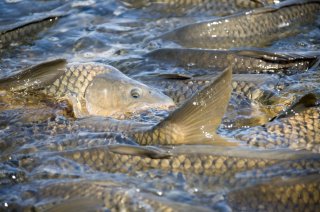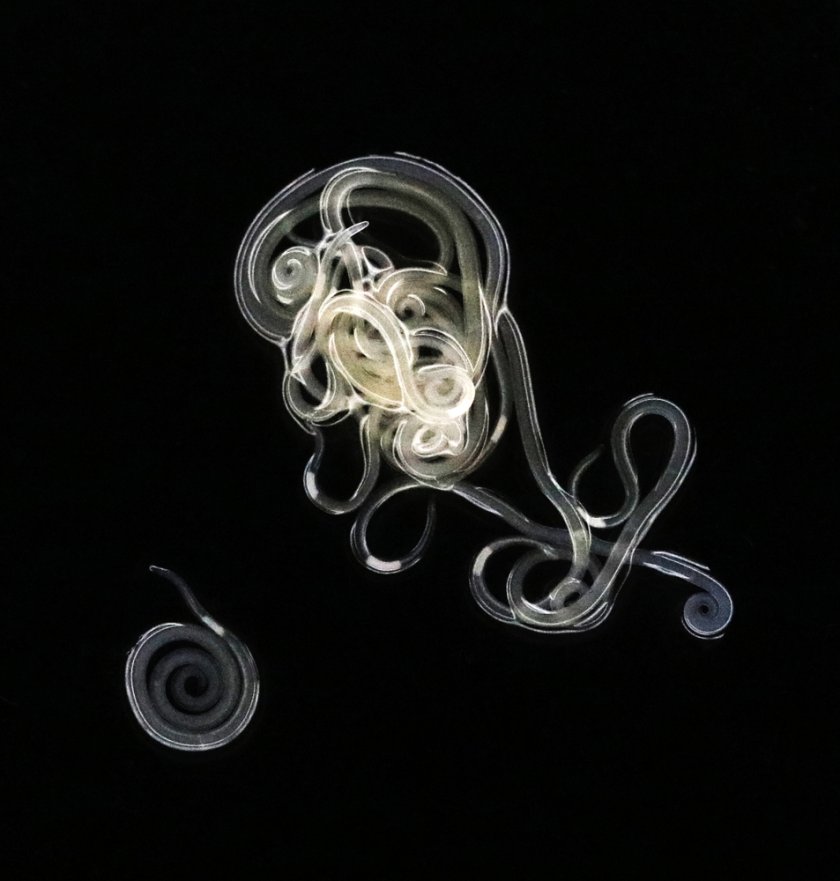
category_news
WBVR researcher Olga Haenen concludes life time career in fish diseases
Olga Haenen worked over 38 years in diagnostics and research in diseases of fish, crustaceans, and shellfish. She did this as head of the National Reference Laboratory (NRL) for Fish Diseases at Wageningen Bioveterinary Research (WBVR, part of Wageningen University & Research). During a seminar related to Haenen her retirement, she and her research colleagues looked back and forward on developments in fish disease research.
Olga Haenen entered the field of fish diseases 38 years ago as a junior researcher. At that time there wasn’t a vast amount of information about fish diseases available. At WBVR an experimental aquarium laboratory was build. “An unique facility in those days which enabled us to perform applied fish disease research”, remembers Haenen. “Our diagnostic work started off with fish, and later also molluscs and crustaceans became part of it.” Common threads throughout her career became eel, carp, and warmwater fish diseases, with focus on parasites, viruses, bacteria, and contact-zoonoses.
Impact
“Pathogens may have an impact on fish, crustaceans and shellfish, but can also affect humans in causing zoonosis”, stated Joke van der Giessen, researcher at the National Institute of Public Health and the Environment (RIVM), and long-time colleague of Haenen. Van der Giessen focussed her speech on so-called zoonotic parasites that affect both fish and humans.

Research
In her presentation, Haenen gave a historic overview of her career of 38 years. She and her team in Lelystad stood at the cradle of some striking discoveries, among which were diseases caused by specific bacteria and viruses in fish species. “Communication about these discoveries wasn’t always easy. Especially when addressing the general public. You don’t want to scare them of eating fish. But scientifically we published many international papers on (new) fish diseases”, states Haenen.

WBVR is National Reference Laboratory for Fish, Shellfish and Crustacean Diseases for the Dutch, and for the latter two animal groups also for the Belgian government. This includes research projects in fish culture and wild fish, and also screening of shellfish for notifiable disease. In recent years, Haenen also spent time and energy in research on insect diseases, still a virgin territory despite the fact that insect farming is a rapidly growing sector. Haenen was invited as guest professor at the HAS Green Academy in Den Bosch from 2018-2022 and worked on healthy, safe and sustainable insect culture for food and feed.
I had a world-class job at the NRL fish diseases
Haenen is proud of the achievements the lab has reached over the years. “Our small lab turned out to become a lab of world renowned standing and with it I had a world-class job. My activities ranged from working at the lab up to advising the FAO and the World Organization of Animal Health. It was a privilege to work here and I foresee a great future for the lab, my colleagues, and the institute,” said Haenen at the closure of her last presentation as a WBVR-researcher.
Novel techniques
Marc Engelsma will succeed Olga Haenen as head of the National Reference Laboratory for Fish, Shellfish and Crustacean Diseases. He highlighted examples of diseases in the three different sections of the lab: fish, molluscs and crustaceans. According to Engelsma, in recent years technology has brought a lot of benefits with regards to diagnostics, but also for innovative research into the biology and prevention of disease. As an example, Engelsma addressed recent developments concerning the flat oyster, the native oyster species of the Netherlands that has become completely overruled by its Japanese family member. Part of this is due to the fact that the Dutch flat oyster carries a parasite, Bonamia ostreae.
“It isn’t all bad news,” Engelsma stated. “Together with our partner institute Wageningen Marine Research and commercial partners we’ve been able to get the native Dutch oyster to reproduce in captivity. This enables us to create a parasite-free population which we can place in environments that are favourable for the oysters.”
A next step in the research would be to detect the presence of the Bonamia-parasite based on so-called environmental DNA. “If that is possible, we can prove the presence of the parasite based on DNA it leaves behind in the water. Diagnostics based on environmental DNA prevents us from sampling animals to monitor the parasites.” Even though the technique hasn’t been successful for Bonamia yet, Engelsma is hopeful he and his team can build on the legacy Haenen left behind and move forward in future developments in fish diseases.